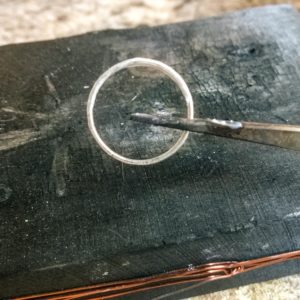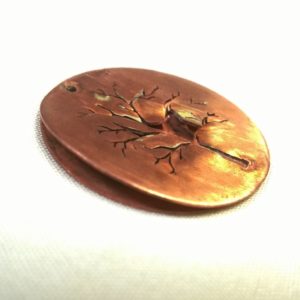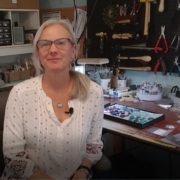Four Tips for Good Jewelry Soldering
Basic Troubleshooting for a Difficult Solder Join
We all have challenges with jewelry soldering from time to time. Maybe you just don’t have the right focus on a particular day. Or perhaps the join is more complicated than usual. Possibly, you’re just starting out and aren’t sure what to expect.
The main thing you can do to improve your jewelry soldering skills is to solder more! When it comes to this valuable technique, experience is the best teacher. Your eye becomes accustomed to the visual cues indicating metal temperature. Your ear tunes in to the sound of the torch and how it changes with heat and pressure. Your hand learns how to apply heat in just the right way.
No matter what your experience level there are four keys to a good solder join. If you are having trouble, re-visit these four elements and adjust your approach where needed.
1. Clean surfaces.
Is the metal you are trying to join truly clean? Solder will not flow where the metal is dirty, greasy, has firescale, etc. So the area to be joined needs to be properly cleaned. This could mean soaking in pickle, cleaning with a degreasing detergent, using an abrasive like pumice powder, or just sanding with emery paper. Rinse thoroughly after cleaning. Note: Your solder has to be clean, too. If you just purchased solder and it’s not flowing, it could be dirty or tarnished. Clean it before using and only cut what you need for the job at hand.
2. Light-Tight Fit.
Even though solder flows into the molecular spaces of the heated metal, and even though it really looks like the solder is filling a gap, don’t think that it behaves like a putty that will stick two pieces together. Even if you manage fill a space with solder, it will probably result in a weak joint. So the two edges being joined need to fit seamlessly. Filing & sanding, using pins to prop up pieces in your soldering board, binding with stainless steel wire, are all ways to achieve a seamless fit. Whatever your join, you want the connection to be “LIGHT TIGHT”.

3. No Flux, No Flow.
As an anti-oxide agent, flux reduces firescale which acts like a “dirt” in your seam. The presence of firescale when soldering causes us to break the first rule: Clean Surfaces. Flux prepares the area where you want the solder to flow. If there is no flux on part of the seam, your solder will not flow into it. Flux the solder chips as well. I like to pick them up with my flux brush or a soldering pick wet with flux. Don’t be stingy with the flux, but know that an excessive amount can get a little messy when you heat it up. We use Handy Flux paste in our classes, but there are many types of flux available. Here are some tips on using paste flux.
4. Proper Heat.
This is usually the culprit when you’re having trouble with jewelry soldering. One of the most important (and sometimes frustrating!) factors in soldering is that each side of the join must reach the correct temperature at the same time for solder to flow properly and fuse the metals. For example, if you have 18ga sheet and you are trying to attach a 22ga wire jump ring to the edge, you need to control the heat well enough that the thick sheet and the thin wire reach the flow temperature at the same time. Most likely, the little ring will heat up really fast and the sheet won’t have time to catch up. If this happens, the solder will flow onto the ring, but not onto the sheet.
So, a good rule of thumb is to heat each piece proportionally. That is, if the sheet is 90% of the design and the ring is 10%, heat the sheet 90% of the time and just flame over the ring a little bit.

Remembering these four tips for a good solder join will help you troubleshoot the basics and increase your chances of getting the jewelry soldering connection you deserve!



Leave a Reply
Want to join the discussion?Feel free to contribute!